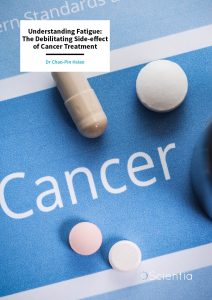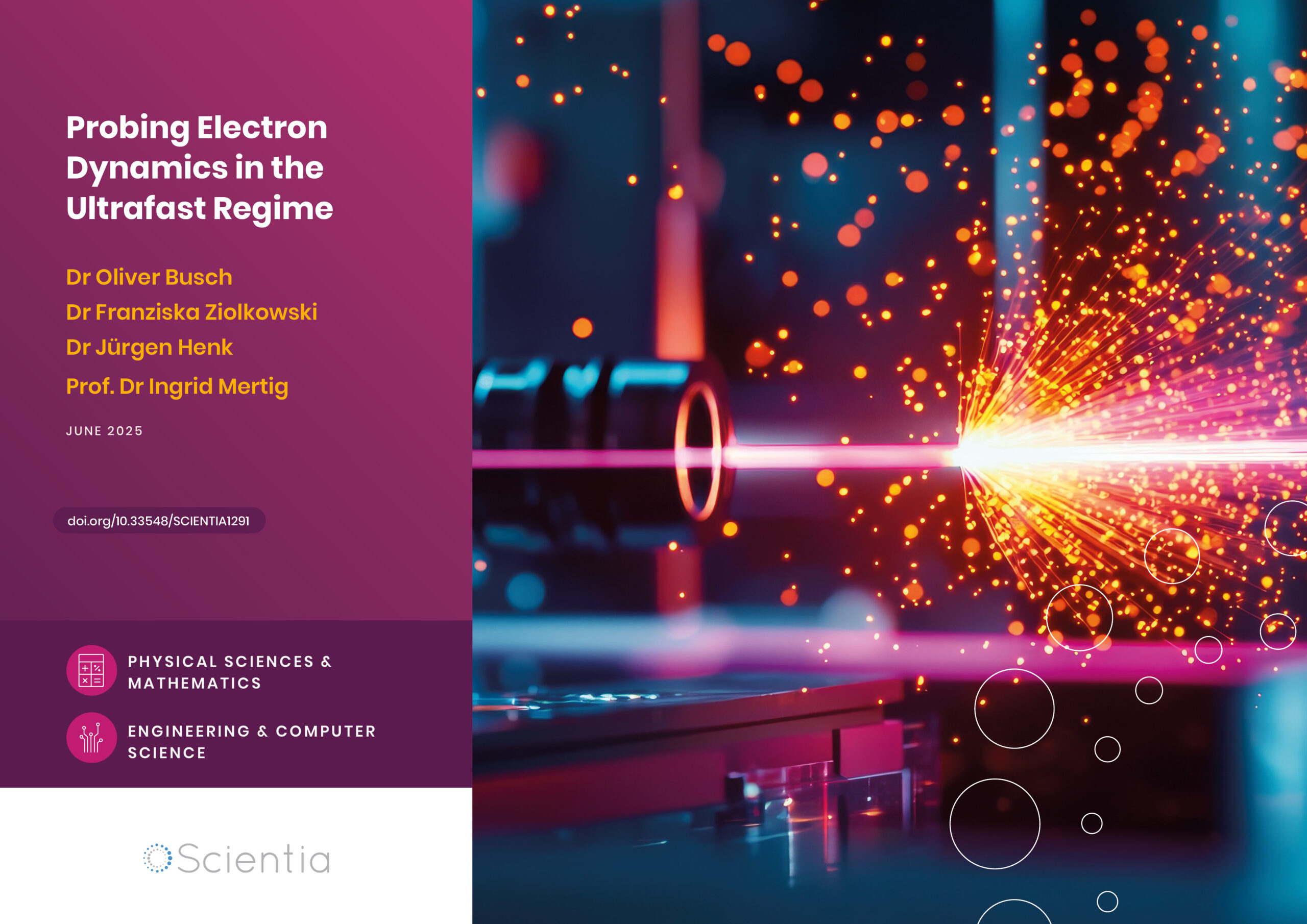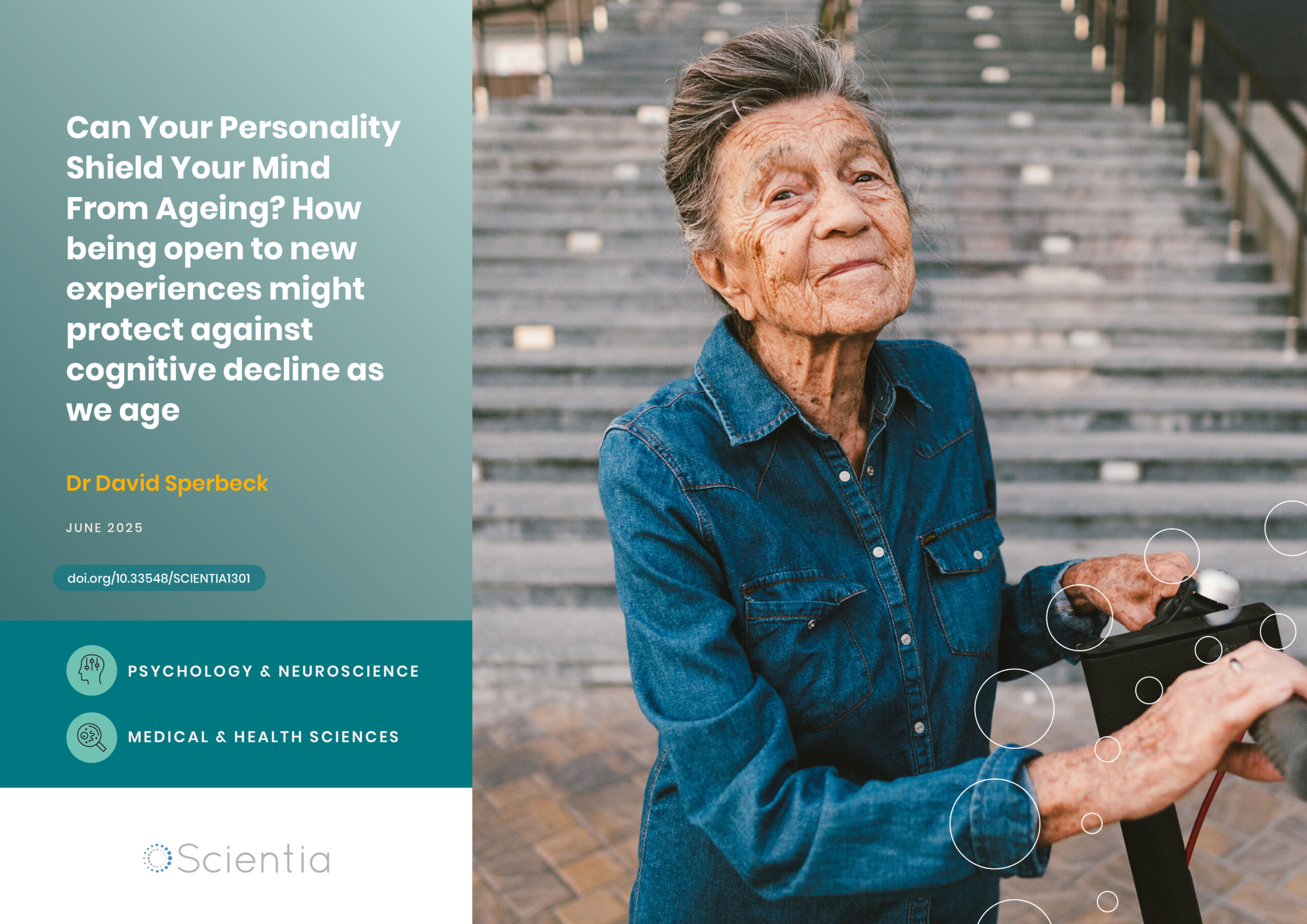Dr Chao-Pin Hsiao – Understanding Fatigue: The Debilitating Side-effect of Cancer Treatment
Cancer comes with many symptoms, but its life-saving treatments also cause negative side effects. One of these is radiation-induced fatigue, a clinical subtype of cancer-related fatigue and a debilitating issue that causes extreme lack of energy in those receiving radiation therapy. While this is a well-known effect of the treatment, exactly why it happens is unclear. Dr Chao-Pin Hsiao at Frances Payne Bolton School of Nursing in Case Western Reserve University, Ohio, is studying the molecular and genetic-level mechanisms that drive fatigue induced by cancer/cancer treatments. Her work on finding fatigue biomarkers provides promise for future combative therapies.
Cancer-related Fatigue
A common and challenging side-effect of cancer and its treatments is fatigue. Known as cancer-related fatigue, this feeling of extreme lack of energy and tiredness can be acute and last a month or less, or chronic, creating a long-lasting impact. Whereas fatigue in a healthy person is caused by activity and relieved by rest, cancer-related fatigue does not follow these patterns and its persistence is emotionally draining.
This health issue can affect all aspects of a person’s life, as even the seemingly most simple of activities become difficult. Walking short distances, minor physical actions, thinking clearly and memory can all be negatively impacted, resulting in a diminished quality of life. Even after cancer treatment has ended, the fatigue and its consequences may remain.
One frequently used approach is radiation therapy, and this varies depending on the type, location and size of a tumour. It works by sending high doses of either X-ray or gamma radiation directly to the tumour, with the aim of killing the cancer cells and shrinking the tumour. The radiation damages the DNA inside the cancer cells beyond repair, which prevents them from repairing themselves and dividing. Eventually, the cells die, are broken down and removed by the body.
Although this is a life-saving technique, it has numerous side effects – many of these are shared across patients, but some are dependent on the location of the tumour and radiotherapy. Nausea, tenderness at the target of radiation, hair loss, skin changes, fertility issues and others can occur during and after treatment. However, one of the most common and severe implications of radiotherapy is radiation-induced fatigue, a type of cancer-related fatigue.
Even though the symptoms of fatigue in cancer are well-documented, it is not entirely clear why they occur. Investigating the molecular and genetic-level mechanisms of radiation-induced fatigue in prostate cancer patients is the work of Dr Chao-Pin Hsiao. She carries out her studies at the Frances Payne Bolton School of Nursing in Case Western Reserve University, Cleveland, Ohio, where she is also an Associate Professor.
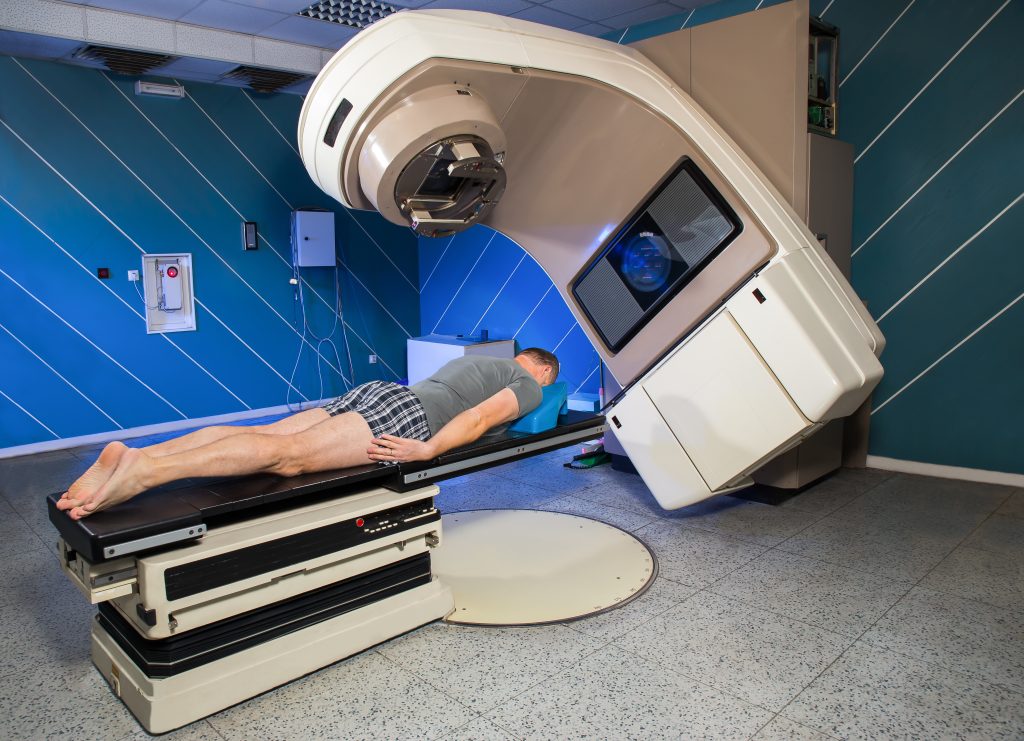
Radiation therapy
The Role of the Mitochondria
In order to understand Dr Hsiao’s research, first we need to get to grips with a key component of the cell known as the mitochondria. Often called the ‘powerhouse’ of the cell, these organelles (structures with a function in a cell) are bound by two membranes. These membranes are a vital component in the role of the mitochondria – to make energy in the form of adenosine triphosphate (ATP) from the food we eat.
This conversion occurs via a series of biochemical reactions called the Krebs cycle, or the citric acid cycle. The whole process is known as oxidative phosphorylation and once it is complete, the ATP that is produced can be used to power the body or be stored for later in times of energy deficit. In addition to its function of energy production, mitochondria also play a part in normal cell death, calcium storage and heat production.
Dr Hsiao focuses much of her work on the role of the mitochondria in radiation-induced fatigue and she is uncovering how its molecular and genetic mechanisms are involved. Because the radiation causes planned damage to cells, the result is tumour shrinkage, but this is in addition to other damage that results in the side-effects.
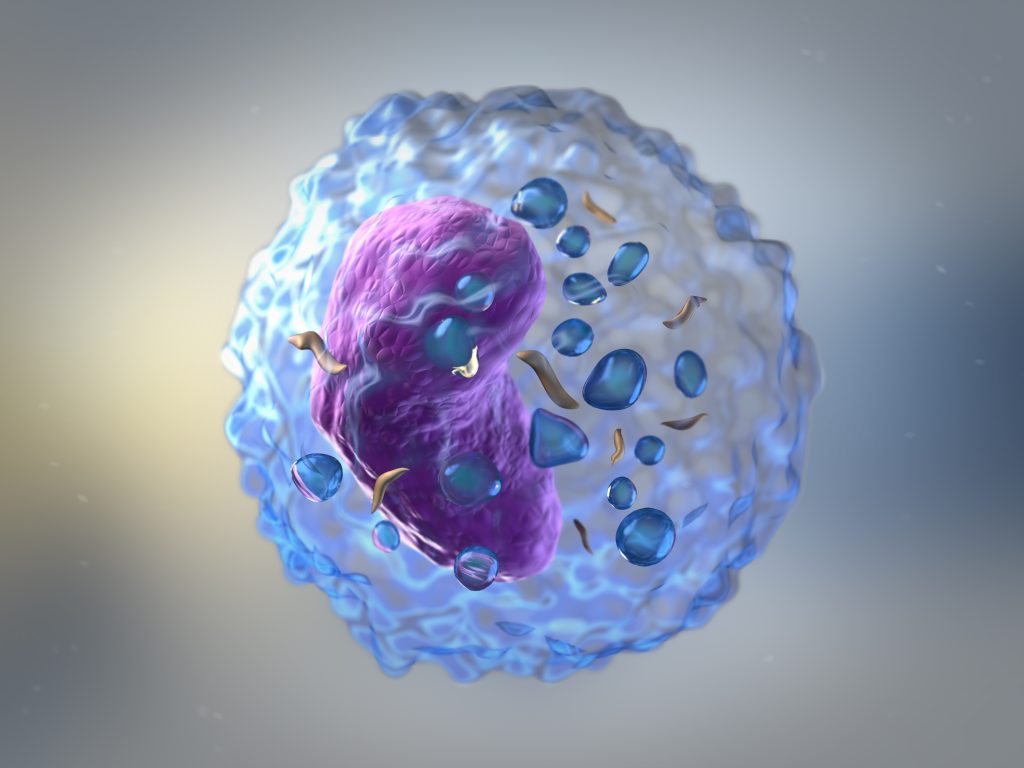
Illustration of a lymphocyte
Mitochondrial Genes and Fatigue
Some of this damage results in the instability of the genome (the complete set of DNA) and inflammation which results in the production of reactive oxygen species that cause further DNA damage. The radiation also impacts the normal jobs of the mitochondria and inhibits its respiratory chain that facilitates energy production.
In an early study, Dr Hsiao studied these biological markers in relation to radiation-induced fatigue in men with prostate cancer receiving a type of radiotherapy called external beam radiation therapy (EBRT). She looked into the genes that are involved in creating new mitochondria (mitochondrial biogenesis) and energy production (bioenergetics). After taking blood samples from the participants, she could decipher which genes were expressed (activated) in ways different than normal during fatigue.
Interestingly, she discovered that specific 14 genes involved in mitochondrial biogenesis and bioenergetics were differentially expressed during radiation therapy and of these, four were significantly related to fatigue. One of these is called BC1 (ubiquinol-cytochrome c reductase) synthesis-like (BCS1L) and Dr Hsiao is now delving deeper into the ‘how and why’ this takes place with the goal of eventually developing effective therapies for managing fatigue. Additional research from her team looked further into the role of incorrectly functioning mitochondria in radiation-induced fatigue. More specifically, they looked at faulty mitochondrial bioenergetics. In a similar format to the previous study, prostate cancer patients were scored on their fatigue level and blood samples were taken at three points during their radiation treatment.
Again, Dr Hsiao honed in on the BCS1L gene and these results helped to form a new hypothesis. This is that reduced BCS1L (gene/protein) impacts the respiratory chain in the mitochondria. The series of reactions in energy production requires certain proteins in an electron transport chain and when BCS1L is in short supply, one of these proteins called complex III is affected. The Rieske iron-sulfur protein is unable to be incorporated into complex III as normal and this results in diminished oxidative phosphorylation and ATP production. Thus, reduced ATP means less energy and more fatigue.
Dr Hsiao believes these findings have the potential to identify novel targets for pharmacological therapeutics but may also be useful for nutritional therapies, known as nutraceutical interventions, to eventually treat fatigue-induced by cancer.
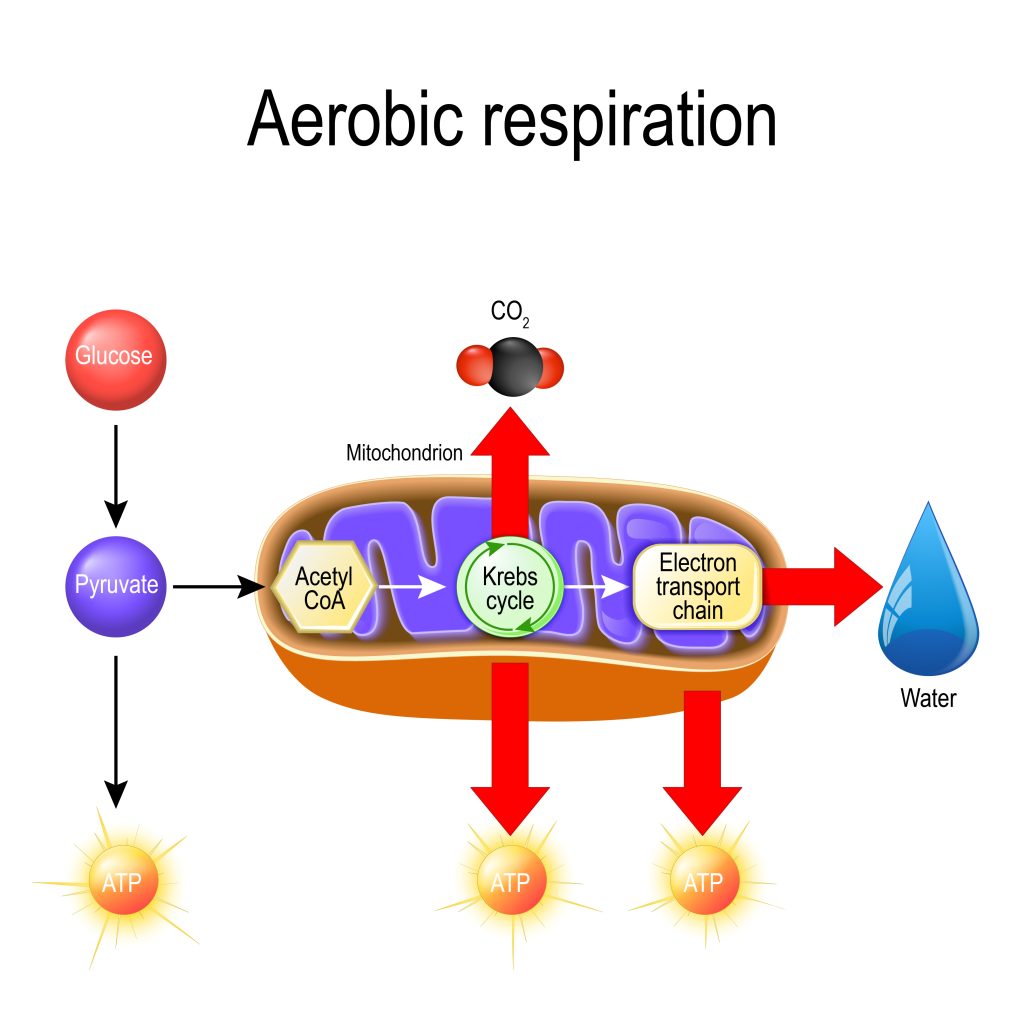
Improving Techniques and Understanding
Working with Dr Leorey Saligan at the National Institute of Nursing Research during her fellowship, Dr Hsiao studied another group of prostate cancer patients, 20 of whom were receiving EBRT and 20 who were on active surveillance who acted as controls between 2010 and 2012. All men were tested for their level of fatigue using a system called Functional Assessment of Cancer Therapy-Fatigue (FACT-F). Those receiving radiation therapy were assessed before, during and at the end of their treatment.
At each of these time points, the participants also had blood taken to test for the expression of genes of interest. The FACT-F scores of radiotherapy patients and controls were no different at the start, however, they decreased at the midpoint for those on treatment and even further at completion. This reducing score indicated worsening fatigue over the treatment time. The blood samples revealed 42 genes that had altered expression during fatigue. Most significantly, a gene called MS4A1 was downregulated, meaning its function was minimised.
This gene is involved in the formation of B-cells – important components of the immune response. Therefore, these results indicate that fatigue during radiotherapy may be related to the downregulation of MSA41 and the consequent impairment of the B-cell immune response.
In order to better understand these processes, Dr Hsiao and her team set out to improve the method of obtaining and analysing B-cells from the blood. B-cells are a type of white blood cell called a lymphocyte which is in the family of peripheral mononuclear cells (blood cells with a round nucleus). And like other cells, mononuclear cells rely on the mitochondria for energy. Their new protocol allowed them to look at integrative mitochondrial function, or specific dysfunction, and the individual complex activity of its electron transport chain during oxidative phosphorylation.
Using this improved technique, Dr Hsiao took peripheral mononuclear cells at three time points from a group of patients with prostate cancer, some receiving radiation therapy and others on active surveillance. She used these cells to determine their mitochondrial oxidative phosphorylation (energy production), electron-transport chain complexes activity, and expression level of BCS1L gene and protein. At the same time points, she measured the patients’ fatigue on the Piper Fatigue Scale.
In line with her previous studies, Dr Hsiao found significantly worse fatigue in those receiving radiation therapy and related downregulation of BCS1L, reduced complex III activity and reduced oxidative phosphorylation. The more severe the downregulation of BCS1L, the more a patient suffered from radiation-induced fatigue.
This interesting result suggests that BCS1L and complex III in mononuclear cells could be important biomarkers, meaning they indicate how the body responds to a disease or treatment. Therefore, they could be promising targets for future remedies against radiation-induced fatigue.

Mitochondrial Bioenergetic Markers of Cancer-related Fatigue
In one of her most recent studies, Dr Hsiao continued to search for evidence of bioenergetic biomarkers for cancer-related acute and chronic fatigue. Again, she focused on the relationships between a messenger RNA (mRNA) and the protein of BCS1L, mitochondrial bioenergetics (oxidative phosphorylation, complex III activity, ATP and reactive oxygen species generation), and fatigue symptoms induced by cancer and cancer treatments. This work led Dr Hsiao to believe that mBCS1L and complex III activity are indeed bioenergetic markers for radiation-induced fatigue and therefore, may also be therapeutic agents.
Dr Hsiao’s dedicated research into the debilitating fatigue that often goes hand-in-hand with cancer and its treatments shows how understanding its molecular and genetic-level mechanisms is vital. As a result of her work, we now have promising new avenues to explore in the development of potential therapies to ease the suffering of patients undergoing life-saving cancer treatment.
SHARE
DOWNLOAD E-BOOK
REFERENCE
https://doi.org/10.33548/SCIENTIA793
MEET THE RESEARCHER

Chao-Pin Hsiao, PhD, RN, FAAN
Frances Payne Bolton School of Nursing
Case Western Reserve University
Cleveland, OH
USA
Dr Chao-Pin Hsiao received her undergraduate and master’s degrees in nursing from the National Taiwan University and then achieved a PhD in oncology nursing from the University of Arizona in the USA. She went on to complete postdoctoral and research fellow positions at the Symptoms Biology Unit of the National Institute of Nursing Research, the National Institutes of Health in Maryland. Dr Hsiao has held several research and teaching positions and now serves as an Associate Professor at Frances Payne Bolton School of Nursing, Case Western Reserve University in Cleveland, Ohio. Here, she carries out her research into the molecular and genetic mechanisms of mitochondrial bioenergetics in cancer-related fatigue.
CONTACT
KEY COLLABORATORS
Charles Hoppel, MD, Director and Professor Emerita, School of Medicine, Case Western Reserve Univerity
Barbara Daly, PhD, RN, FAAN, Professor Emerita, Frances Payne Bolton School of Nursing, Case Western Reserve University
Leorey Saligan, PhD, RN, CRNP, FAAN, Acting Chief and Principal Investigator, Symptom Science Center, Symptom Biology Unit, Division of intramural Research, National Institute of Nursing Research, National Institutes of Health
FUNDING
National Institutes of Nursing Research, National Institutes of Health (K01NR015246)
Oncology Nursing Society Foundation (RES125833)
CTSC Core Utilization Pilot Grant, Case Western Reserve University
VPR Catalyst Award/Seed Funding, CWRU
FURTHER READING
C-P Hsiao, B Daly, M-K Chen, et al., Possible Bioenergetic Biomarker for Chronic Cancer-Related Fatigue, Nursing Research, 2021, 70(6), 475-480. DOI: https://doi.org/10.1097/NNR.0000000000000547
C-P Hsiao, M-K Chen, ML Veigl, et al., Relationships between expression of BCS1L, mitochondrial bioenergetics, and fatigue among patients with prostate cancer, Cancer Management and Research, 2019, 11, 6703—6717. DOI: https://doi.org/10.2147/CMAR.S203317
C-P Hsiao, C Hoppel, Analyzing mitochondrial function in human peripheral blood mononuclear cells, Analytical Biochemistry, 2018, 549, 12–20. DOI: https://doi.org/10.1016/j.ab.2018.03.003
C-P Hsiao, M-K Chen, B Daly, C Hoppel, Integrated Mitochondrial Function and Cancer-related Fatigue in Men with Prostate Cancer Undergoing Radiation Therapy, Cancer Management and Research, 2018, 10, 6367–6377. DOI: https://doi.org/10.2147/CMAR.S185706
C-P Hsiao, SY Reddy, M-K Chen, LN Saligan, Genomic Profile of Fatigued Men Receiving Localized Radiation Therapy, Biological Research for Nursing, 2016, 18(3), 281–289. DOI: https://doi.org/10.1177/1099800415618786
C-P Hsiao, D Wang, A Kaushal, et al., Differential Expression of Genes Related to Mitochondrial Biogenesis and Bioenergetics in Fatigued Prostate Cancer Men Receiving External Beam Radiation Therapy, Journal of Pain and Symptom Management, 2014, 48 (6), 1080–1090. DOI: https://doi.org/10.1016/j.jpainsymman.2014.03.010
C-P Hsiao, D Wang, A Kaushal, L Saligan, Mitochondria-related gene expression changes are associated with fatigue in patients with nonmetastatic prostate cancer receiving external beam radiation therapy, Cancer Nursing, 2013, 36(3), 189–97. DOI: https://doi.org/10.1097/NCC.0b013e318263f514

REPUBLISH OUR ARTICLES
We encourage all formats of sharing and republishing of our articles. Whether you want to host on your website, publication or blog, we welcome this. Find out more
Creative Commons Licence (CC BY 4.0)
This work is licensed under a Creative Commons Attribution 4.0 International License. 
What does this mean?
Share: You can copy and redistribute the material in any medium or format
Adapt: You can change, and build upon the material for any purpose, even commercially.
Credit: You must give appropriate credit, provide a link to the license, and indicate if changes were made.
SUBSCRIBE NOW
Follow Us
MORE ARTICLES YOU MAY LIKE
How Food Environments Shape Our Eating Habits
How we eat dramatically impacts our health, yet millions of Americans live in ‘food deserts’ – areas with limited access to fresh, nutritious food. Recent research reveals that solving this crisis requires looking beyond just physical access to food to understand how our entire community environment shapes our dietary choices. Through a series of pioneering studies, Dr Terrence Thomas and colleagues at North Carolina A&T State University have been investigating how different aspects of our food environment influence what we put on our plates. Their findings suggest that creating lasting change requires reimagining how communities engage with food at every level.
Dr Jim Wu | Ziresovir Offers New Hope for Treating Respiratory Syncytial Virus Infections
Respiratory syncytial virus (RSV) causes respiratory tract infections in children and adults. While for many patients the outcomes of infection are mild, for others, infection can prove fatal, and there is a lack of effective treatments. Dr Jim Wu from the Shanghai Ark Biopharmaceutical Company in China carries out his vital research to develop new, safe, and effective treatments to tackle this killer.
Dr Sandra Grumelli | The Importance of the Choline in Chronic Lung Infections
People with chronic lung conditions like COPD and cystic fibrosis are vulnerable to lung infections caused by the bacterium Pseudomonas aeruginosa. These infections are often difficult to treat and can cause sudden worsening of symptoms, known as flare-ups or acute exacerbations. While we know P. aeruginosa triggers inflammation and damage in the lungs, much less is understood about how exactly it causes these flare-ups, or how it survives in such a harsh environment. Dr Sandra Grumelli from the Center of Investigations of Respiratory Diseases in Argentina, has explored the role of a common molecule called choline which is released during infection. Using a combination of mouse models and laboratory experiments, she has discovered that choline not only makes breathing harder, it also helps P. aeruginosa adapt to and persist in the lungs. Her research opens up new possibilities for tackling chronic infections by targeting the bacteria’s energy use and the way it responds to its environment.
Can Your Personality Shield Your Mind From Ageing? How being open to new experiences might protect against cognitive decline as we age
Many of us have witnessed the troubling effects of ageing on the mind in older friends or family members – the forgotten names, the misplaced keys, the struggle to solve problems that once seemed simple. For decades, scientists have accepted cognitive decline as an inevitable part of growing older. But what if our personality could protect us from some of these changes? A remarkable 25-year study by Dr David Sperbeck, a neuropsychologist at North Star Behavioral Health Hospital in Alaska, has uncovered compelling evidence that certain personality traits might act as a shield against age-related cognitive decline.

